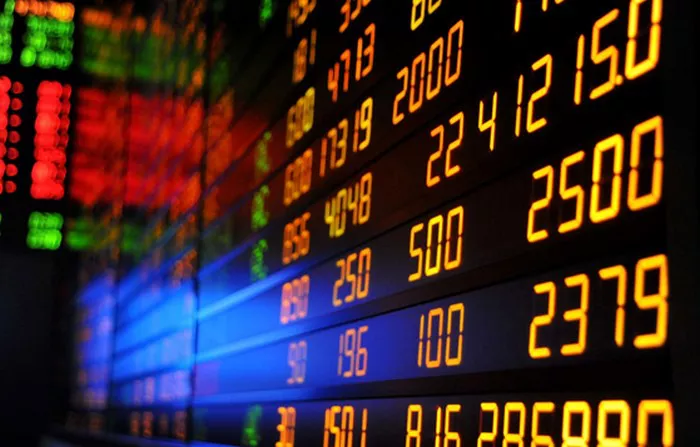The Dow Jones futures index serves as a crucial barometer for gauging market sentiment, assessing future price trends, and making informed investment decisions. As one of the most widely followed indicators of market performance, understanding what the Dow Jones futures index indicates is essential for traders, investors, and market participants seeking insights into the direction of the stock market. In this article, we delve into the significance of the Dow Jones futures index, exploring its components, calculation methodology, and implications for market analysis.
Understanding Dow Jones Futures
The Dow Jones Industrial Average (DJIA), often referred to simply as the Dow, is a price-weighted index that tracks the performance of 30 large-cap stocks traded on the New York Stock Exchange (NYSE) and the Nasdaq. While the DJIA provides a snapshot of current market conditions, Dow Jones futures allow investors to speculate on the future direction of the index by trading futures contracts based on the DJIA.
Dow Jones futures contracts, traded on futures exchanges such as the Chicago Mercantile Exchange (CME) and the Intercontinental Exchange (ICE), represent agreements to buy or sell the DJIA at a predetermined price and date in the future. These contracts enable investors to hedge against market risk, speculate on future price movements, and gain exposure to the broader stock market.
Components of the Dow Jones Futures Index
The Dow Jones futures index is based on the performance of the DJIA, which consists of 30 blue-chip stocks representing various sectors of the economy. These stocks are selected by the editors of The Wall Street Journal, who aim to create a diversified index that reflects the overall performance of the U.S. stock market.
The components of the DJIA include companies such as Apple Inc., Microsoft Corporation, The Boeing Company, and The Walt Disney Company, among others. These companies are leaders in their respective industries and are considered bellwethers of the U.S. economy, making them influential components of the index.
Calculation Methodology
The Dow Jones futures index is calculated using a price-weighted methodology, which means that the price of each stock in the index is weighted according to its share price rather than its market capitalization. This means that higher-priced stocks have a greater impact on the index’s value compared to lower-priced stocks, regardless of the companies’ market values.
To calculate the DJIA, the prices of the 30 component stocks are added together and divided by a divisor that adjusts for stock splits, dividends, and other corporate actions. The resulting figure represents the average price of the component stocks and serves as the value of the index. Changes in the prices of the component stocks will impact the value of the DJIA and, by extension, the Dow Jones futures index.
Significance for Market Analysis
The Dow Jones futures index serves as a valuable tool for market analysis, providing insights into market sentiment, investor confidence, and future price trends. Changes in the Dow Jones futures index can indicate shifts in market expectations, economic conditions, and geopolitical factors that may impact stock prices and broader market performance.
A rising Dow Jones futures index suggests optimism and bullish sentiment among investors, indicating expectations of future price appreciation in the stock market. Conversely, a declining Dow Jones futures index may signal concerns about economic growth, corporate earnings, or other factors that could weigh on stock prices and lead to downward pressure on the market.
Market Volatility and Risk Management
Dow Jones futures index can also serve as indicators of market volatility and risk appetite, as changes in futures prices reflect fluctuations in investor sentiment and expectations. During periods of heightened uncertainty or market turbulence, futures prices may exhibit increased volatility as investors adjust their positions in response to changing conditions.
For investors and traders, monitoring the Dow Jones futures index can help assess risk levels, identify potential opportunities, and implement risk management strategies. By tracking futures prices and market trends, investors can make more informed decisions about portfolio allocation, asset allocation, and hedging strategies to mitigate potential losses and capitalize on market opportunities.
Implications for Trading Strategies
The Dow Jones futures index can also inform trading strategies and investment decisions, as changes in futures prices provide valuable insights into market trends and potential price movements. Traders may use technical analysis, chart patterns, and trend indicators to identify entry and exit points based on futures price movements and market dynamics.
Additionally, traders may employ strategies such as trend following, momentum trading, and mean reversion to capitalize on price trends and market fluctuations. By incorporating Dow Jones futures index into their analysis, traders can enhance their understanding of market dynamics and improve their ability to profit from changing market conditions.
Conclusion
In conclusion, the Dow Jones futures index plays a significant role in market analysis, providing insights into market sentiment, investor confidence, and future price trends. By tracking changes in futures prices, investors and traders can assess market risk, identify potential opportunities, and implement trading strategies to capitalize on market trends effectively.
Understanding what the Dow Jones futures index indicates is essential for navigating the complexities of the stock market and making informed investment decisions. By incorporating futures prices and market trends into their analysis, investors can enhance their ability to manage risk, optimize returns, and achieve their financial goals in an ever-changing market environment.


